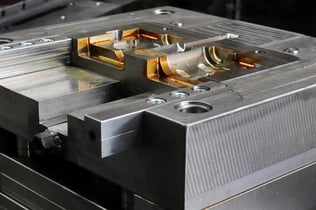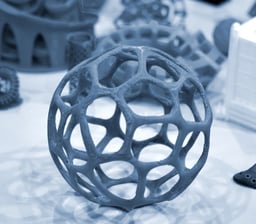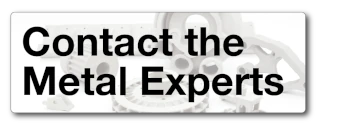
Metal Injection Molding vs Metal Additive Manufacturing: Part Complexity & Tolerances
These cutting-edge processes offer unparalleled advantages, but two key factors will guide your decision-making journey - part complexity and tolerances.
Part complexity and tolerances hold the key to unlocking innovation in any industry. From intricate geometries to precise performance requirements, meeting these demands is challenging. Choosing the best manufacturing process is crucial for top-notch quality and cost-effective production.
In this guide, we’ll explore the intricacies of MIM and MAM, unveiling and comparing their unique capabilities. Join us on this exhilarating journey, where metal meets mastery, and discover the ultimate choice for your next metal masterpiece.
Metal Injection Molding: Understanding the MIM Process

Metal injection molding combines the principles of plastic injection molding and powder metallurgy to produce complex metal parts with excellent dimensional accuracy.
The metal injection molding process involves mixing fine metal powders with a thermoplastic binder to create a feedstock. The feedstock is then injected into a mold cavity and subjected to heat and pressure to form the geometry of the designed part. The parts then go through subsequent operations to remove the binders and sinter the product to near full density and net shape.
Here are some highlights of part complexity and tolerances achievable with MIM:
- MIM produces intricate and highly detailed parts with complex geometries. The process allows for thin walls, fine features, and internal cavities that are difficult to achieve through traditional manufacturing methods.
- The dimensional accuracy of MIM parts is typically within ±0.5% due to the shrinkage that occurs during the de-binding and sintering stages. However, tighter tolerances can be achieved with additional post-processing steps.
- MIM is well-suited for producing small to medium-sized components with detailed features, making it ideal for the medical, dental, and electronics industries.
Metal Additive Manufacturing: Unpacking the MAM Process & Technology
Metal additive manufacturing, also known as metal 3D printing, is a revolutionary process that builds parts layer by layer using powdered metal materials. It offers unparalleled design freedom and the ability to create complex geometries with minimal constraints.
Let’s check out some of the main highlights on part complexity & tolerances with MAM:
- MAM enables the production of highly complex parts with intricate internal structures, lattice designs, and optimized lightweight components that are difficult or impossible to manufacture using traditional methods.
- The dimensional accuracy of metal additive manufacturing depends on various factors such as machine capabilities, powder properties, and post-processing techniques. Achieving tolerances within ±0.1 mm is generally feasible, but tighter tolerances may require additional machining or finishing options, especially as the parts increase in size.
- Metal additive manufacturing excels in the aerospace, defense, and automotive industries, where lightweight and optimized parts, rapid prototyping, and customization are crucial.
MIM versus MAM: Additional Decision-Making Criteria
Now that you have a general understanding of the main differences between MIM & MAM, let’s look at the key factors you should consider when deciding between the two:
-
Cost-effectiveness
Evaluate the overall cost of production, including tooling, material costs, post-processing requirements, and scalability. -
Complexity and tolerances
Assess specific part complexity and tolerance requirements and determine which process best meets those criteria. -
Design flexibility
Determine the level of design freedom needed for your parts, including considerations for overhangs, internal channels, and lattice structures. -
Production volume
Consider the production volume required for your project, as both MIM and MAM have different economies of scale. -
Post-processing
Keeping the desired final surface finish in mind, consider the impact of post-production steps on your overall time, cost, and final part properties.
Below, we compare metal injection molding and metal additive manufacturing based on these factors:
Key Decision-Making Criteria for MIM vs MAM
| Criteria | Metal Injection Molding | Metal Additive Manufacturing |
|
Cost-Effectiveness |
-Cost effective for high-volume production |
-Cost-effective for low to large-volume production (depending on the additive tech used) |
|
Complexity & Tolerances |
-Great for complex parts with medium to high tolerances (dependent on the post-processing stage) |
-Superior for highly complex parts with medium to high tolerances (dependent on the post-processing stage) |
|
Design Flexibility |
-Tooling & ejection needs to be taken into account |
-Allows for complex geometries and internal structures -Rapid design iterations are possible |
|
Production Volume |
-Suited for high-volume production as costs per unit decrease significantly with scale | -Ideal for low to high-volume production (depending on the technology used) |
|
Post-Processing |
-Requires de-binding & sintering |
-Requires removal from the build platform and may require removal of support structures |
From Intricate Design to Precise Tolerances: Wrapping Up the Debate
Both MIM and MAM have unique advantages concerning part complexity and tolerances. MIM excels in consistently producing complex designs at high volumes with cost-effectiveness increasing as production volume follows. In contrast, MAM expands design possibilities, creating intricate structures and topology-optimized designs.
In choosing between the two, consider not just complexity and tolerances, but also overall costs, design flexibility, production volumes, and post-processing. By fully understanding each process’s strengths and limitations, you can make the best decision for your application.
Looking to learn more about all things MIM & MAM? Check out our blog for additional resources!
Additionally, if you have any questions, feel free to reach out to one of our experts! We'd love to hear from you!

